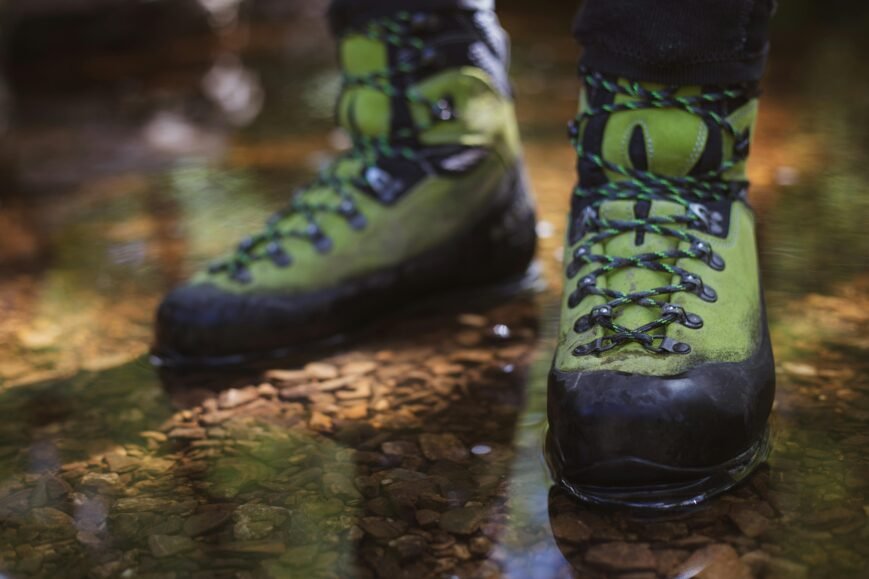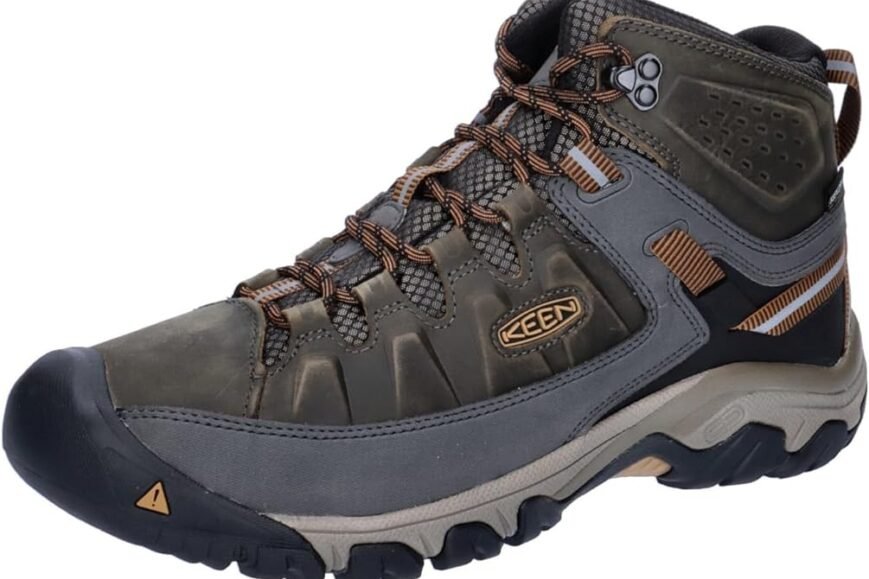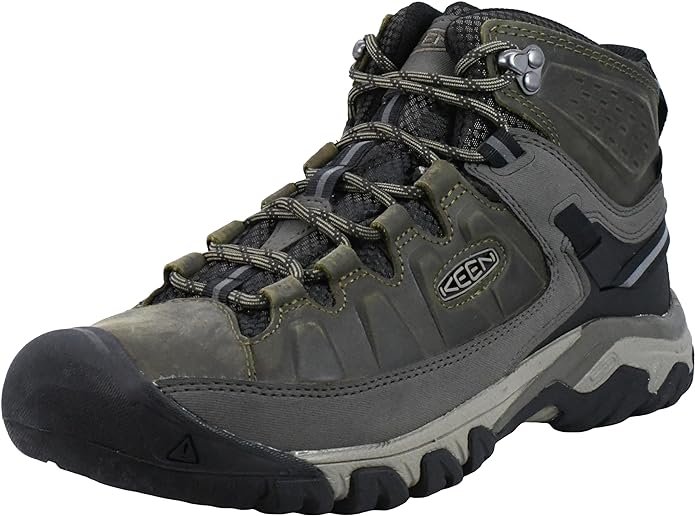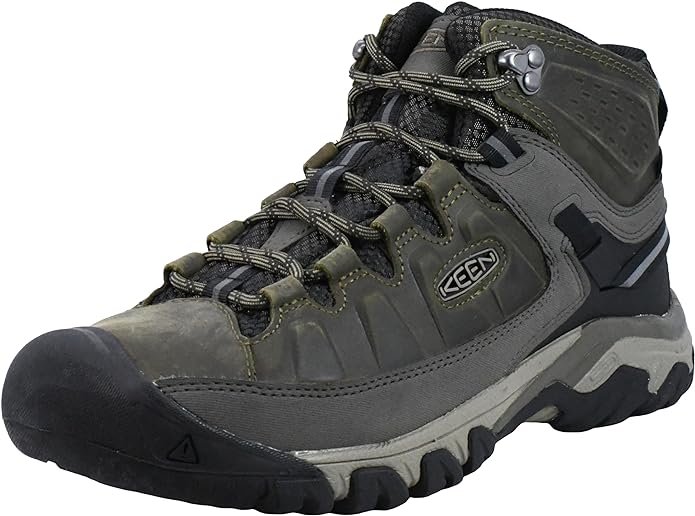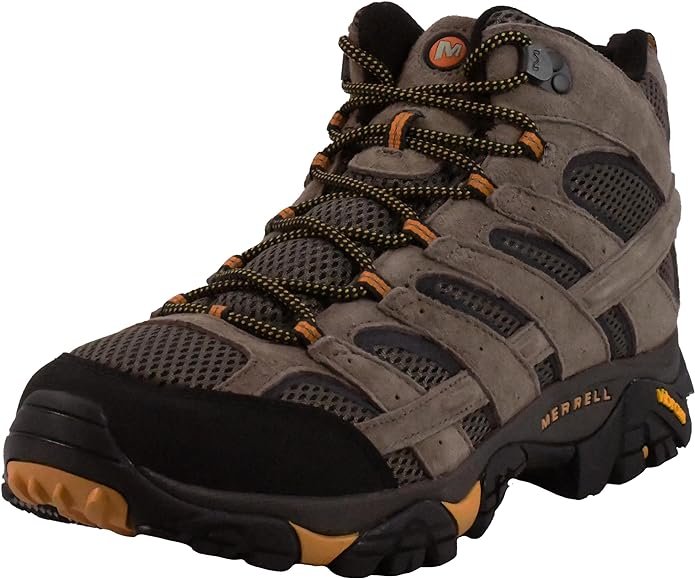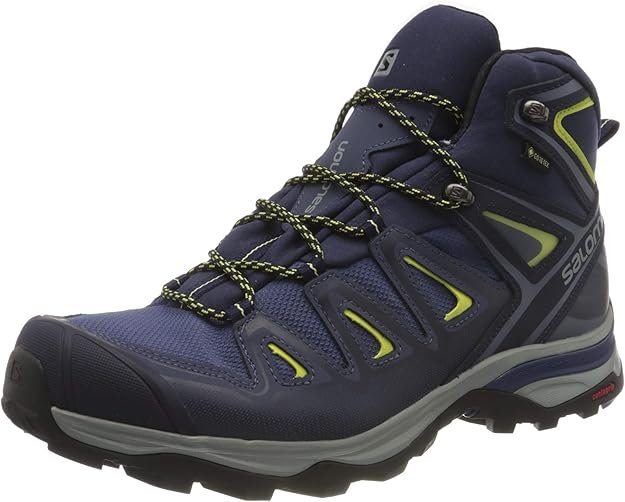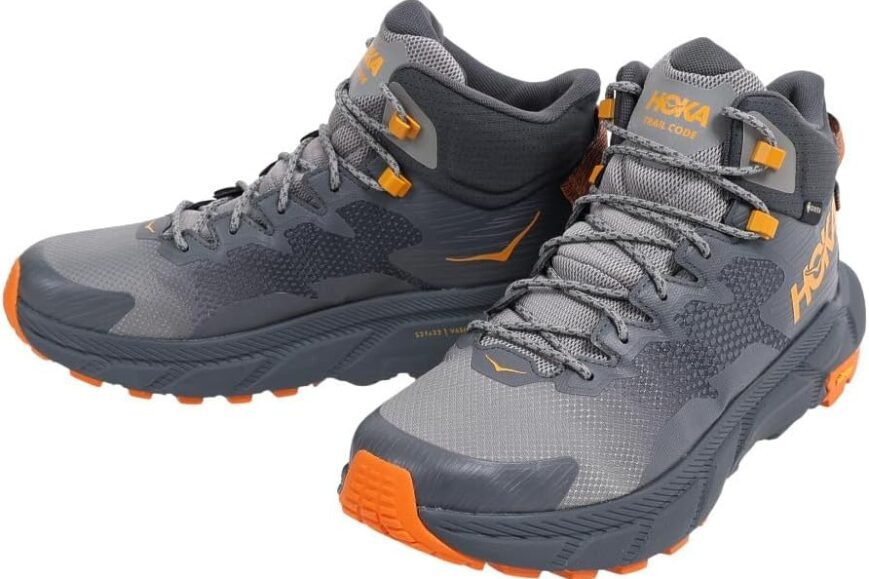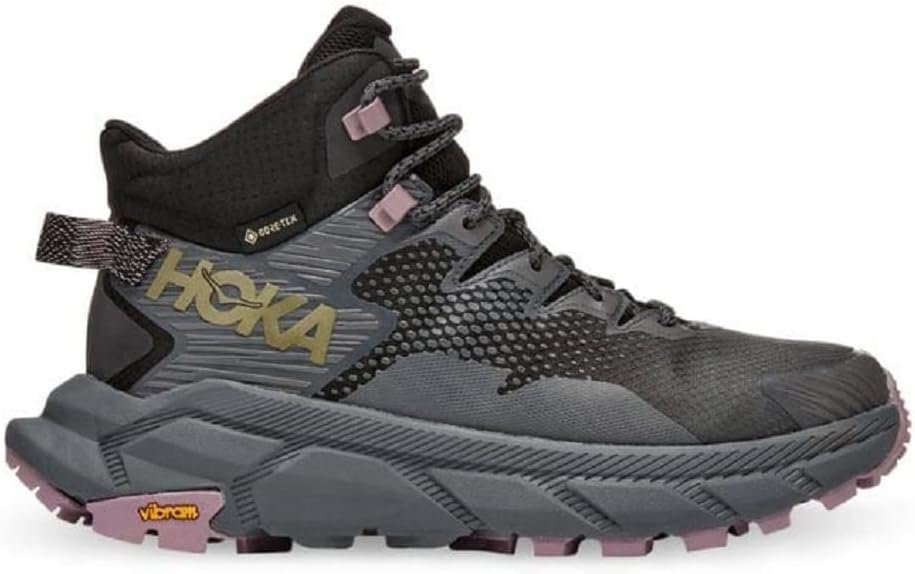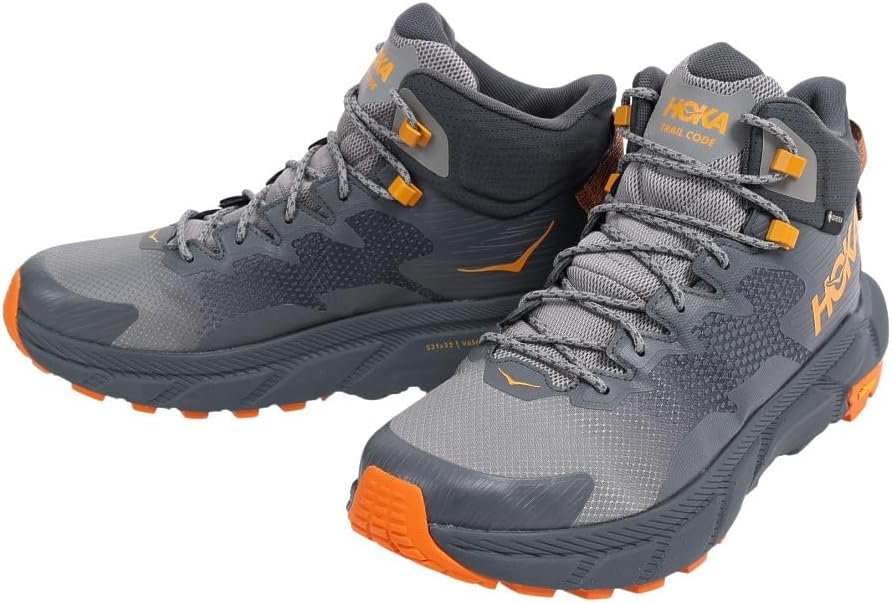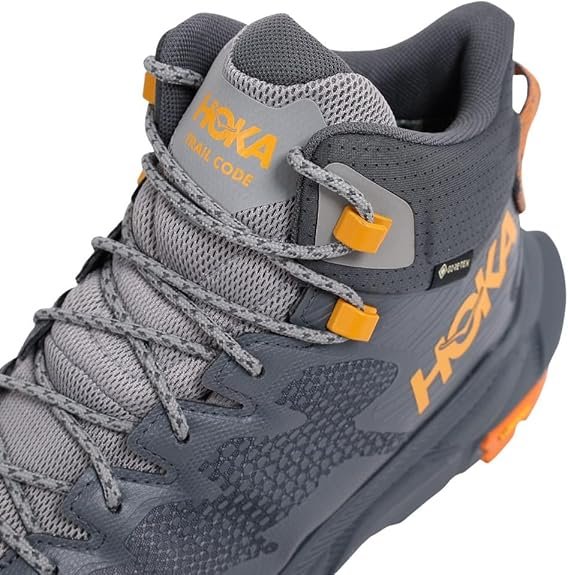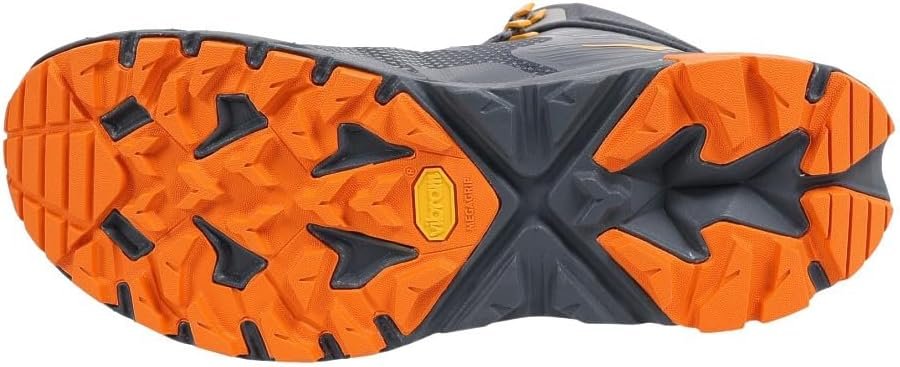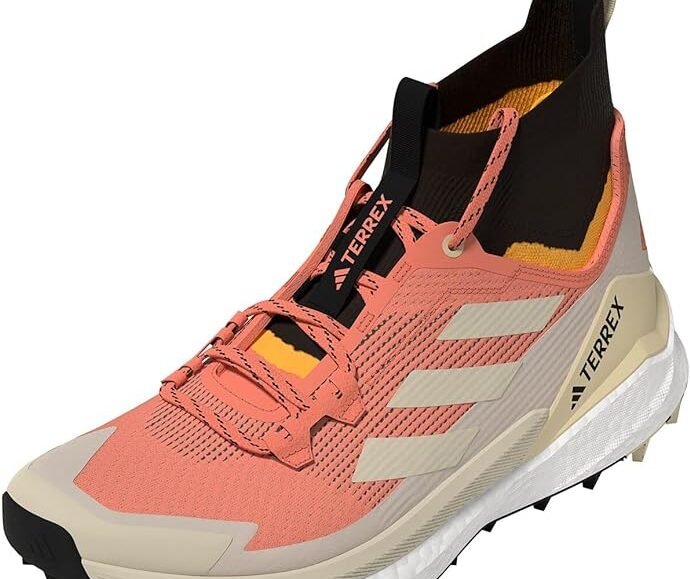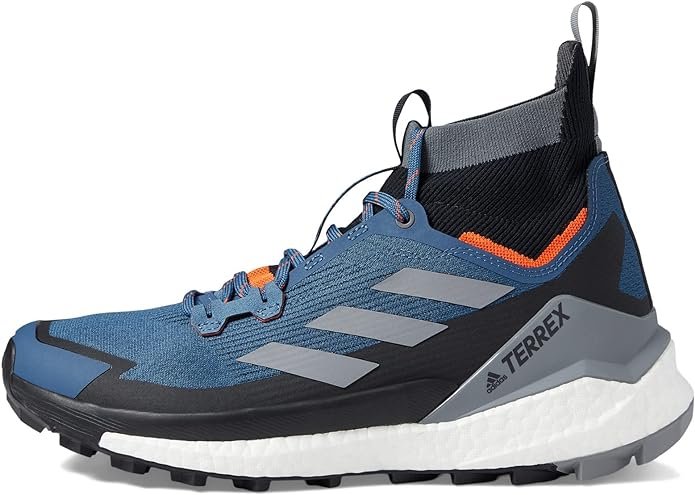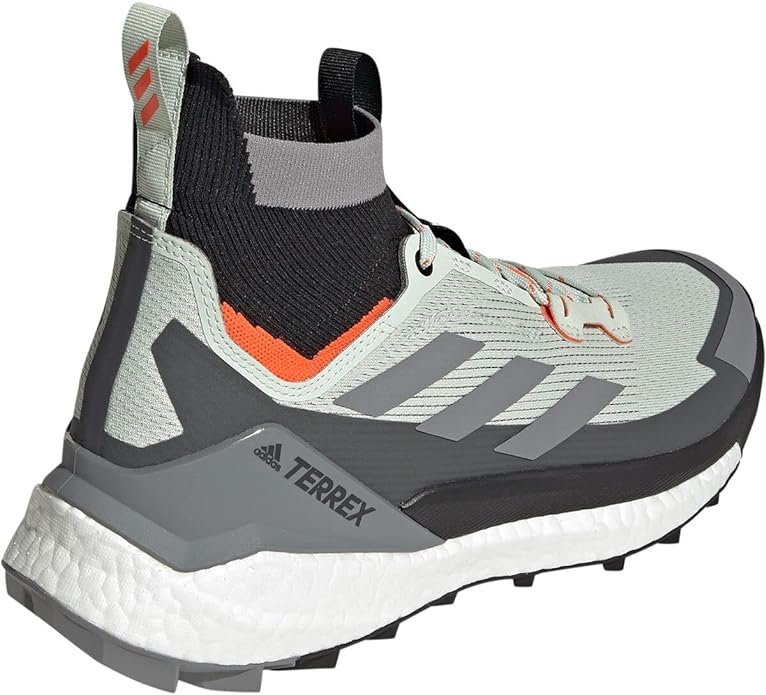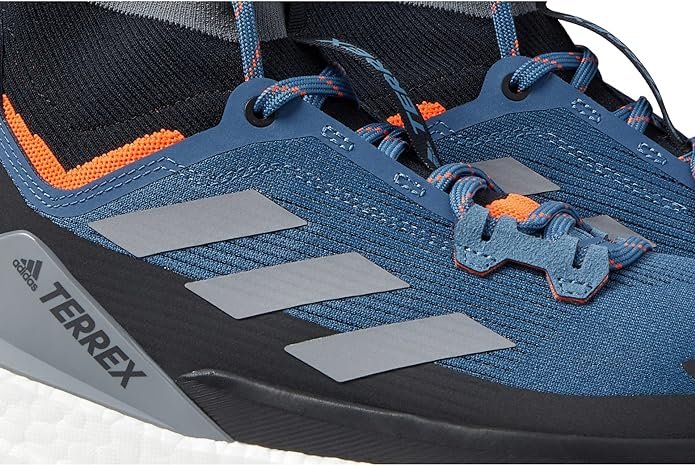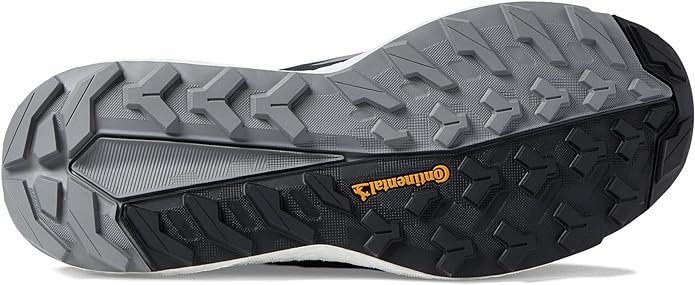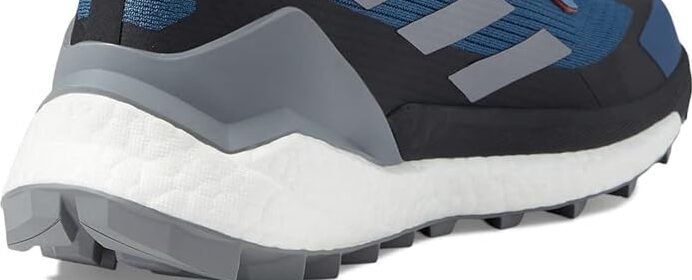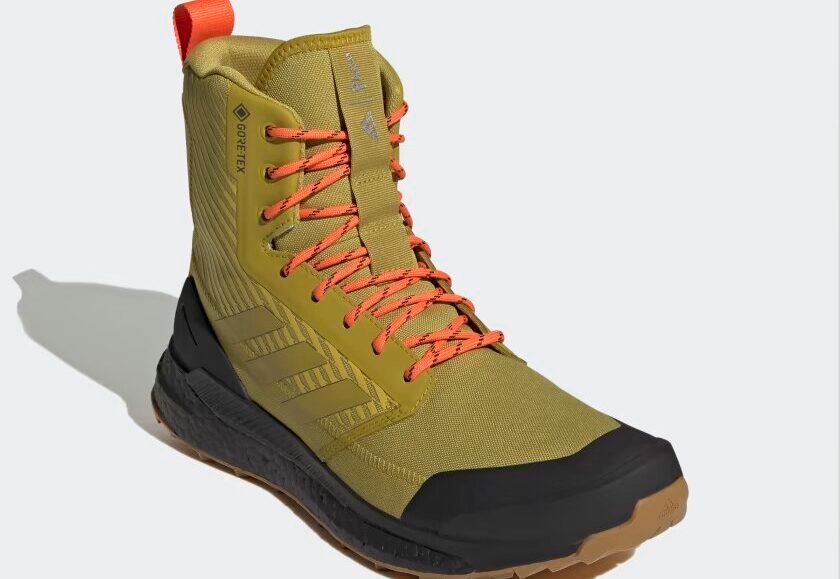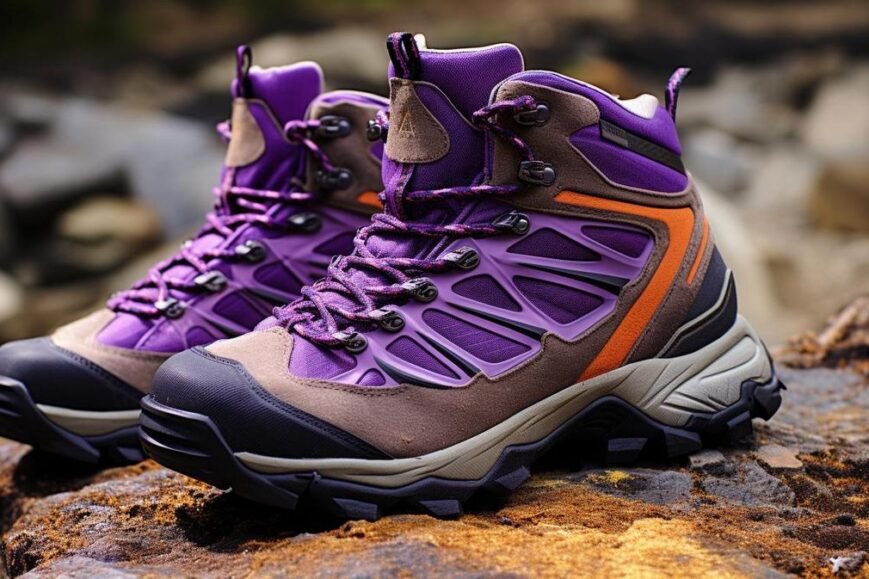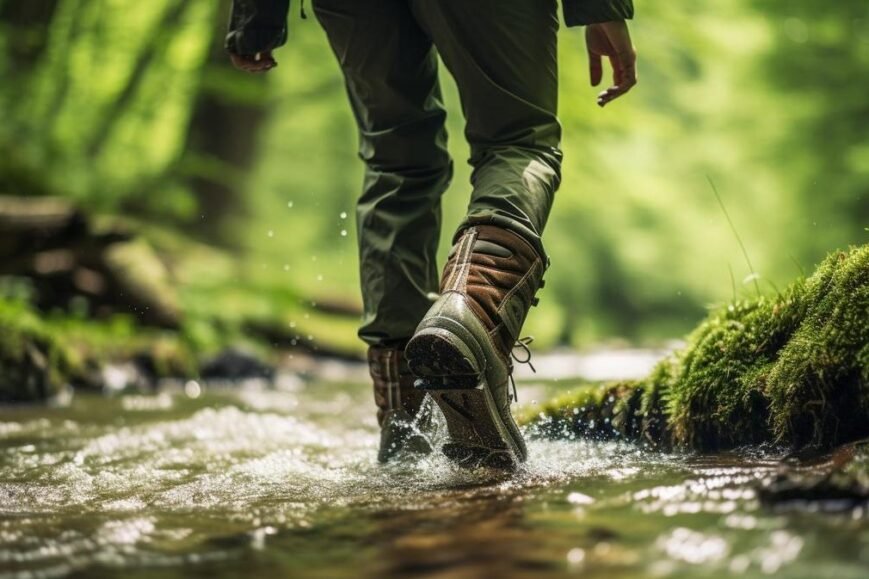Choosing the right hiking boots is crucial for a successful and enjoyable hiking experience. With so many options available, it can be overwhelming to decide which pair is the best fit for your needs. This guide provides detailed and unbiased reviews of the top hiking boots for 2024, helping you make an informed decision.
Our Top Picks
Salomon X Ultra 4 Mid GTX
The Salomon X Ultra 4 Mid GTX stands out as a versatile and reliable hiking boot, engineered to excel across a variety of terrains. This model has earned a reputation for its lightweight design, which significantly reduces fatigue during long treks, making it an ideal choice for hikers who prioritize agility and comfort.
Key Features
- GORE-TEX Waterproofing: Keeps your feet dry in wet conditions.
- Advanced Chassis: Provides stability and support on uneven terrain.
- Contagrip MA Outsole: Ensures superior grip on both wet and dry surfaces.
Pros
- Lightweight and comfortable for long hikes.
- Excellent waterproofing capabilities.
- Great traction on various surfaces.
Cons
- May not provide enough ankle support for some hikers.
- Slightly narrow fit might not suit all foot shapes.
One of the key features of the Salomon X Ultra 4 Mid GTX is its advanced chassis, which provides enhanced stability and motion control. This feature is particularly beneficial when navigating uneven or rocky terrain, as it helps to prevent ankle injuries and ensures a more secure footing. Additionally, the boot incorporates GORE-TEX waterproofing technology, which is renowned for its ability to keep feet dry in wet conditions while still allowing for breathability. This ensures that your feet remain comfortable and blister-free, even during prolonged hikes in damp environments.

The boot’s outsole is equipped with Contagrip MA, a high-performance rubber compound that delivers excellent traction on both wet and dry surfaces. This ensures that hikers can maintain their footing on slippery rocks, muddy trails, and loose gravel. Furthermore, the Salomon X Ultra 4 Mid GTX features a SensiFit system, which cradles the foot from the midsole to the lacing system, providing a snug and customized fit for different foot shapes.

In terms of durability, the boot is constructed with a combination of synthetic materials and leather, offering a balance of lightweight performance and robust protection. The protective toe cap and mudguard add an extra layer of defense against trail hazards, ensuring that the boots can withstand the rigors of challenging hikes.
Overall, the Salomon X Ultra 4 Mid GTX is a top choice for hikers seeking a blend of comfort, stability, and durability. Its innovative design and high-quality materials make it a reliable companion for a wide range of outdoor adventures.
Hoka Anacapa Mid GTX
The Hoka Anacapa Mid GTX is engineered for hikers who prioritize maximum comfort and cushioning. This boot features a plush midsole made from compression-molded EVA foam, which provides exceptional shock absorption and reduces strain on the feet during long-distance hikes. The lightweight construction of the Anacapa Mid GTX, which incorporates a combination of nubuck leather and recycled polyester mesh, ensures that hikers can cover extensive distances without feeling weighed down.
Key Features
- GORE-TEX Waterproofing: Ensures your feet stay dry.
- EVA Midsole: Provides exceptional cushioning and shock absorption.
- Vibram Megagrip Outsole: Offers excellent traction on various terrains.
Pros
- Superior cushioning for long hikes.
- Lightweight and breathable design.
- Reliable waterproofing.
Cons
- May lack durability on extremely rugged terrain.
- Higher price point compared to other models.
A standout feature of the Hoka Anacapa Mid GTX is its GORE-TEX waterproof membrane. This technology ensures that the boot remains impermeable to water while maintaining breathability, keeping feet dry and comfortable in various weather conditions. This is particularly beneficial for hikers who encounter wet or muddy trails, as it helps to prevent blisters and other foot-related issues.

The boot’s outsole is made from Vibram Megagrip rubber, known for its superior traction and durability. This ensures reliable grip on a variety of surfaces, from wet rocks to loose gravel, enhancing stability and reducing the risk of slips and falls. Additionally, the Anacapa Mid GTX features a unique extended-heel geometry, which promotes a smooth and efficient heel-to-toe transition, further enhancing comfort during prolonged hikes.

In terms of support, the Hoka Anacapa Mid GTX includes an anatomically designed footbed that provides arch support and helps to distribute weight evenly across the foot. This is particularly advantageous for hikers with flat feet or those who require additional support to prevent foot fatigue.
Overall, the Hoka Anacapa Mid GTX is an excellent choice for hikers seeking a combination of comfort, support, and durability. Its advanced features and high-quality materials make it well-suited for long-distance hikes and challenging terrains.
Adidas Terrex Free Hiker 2
The Adidas Terrex Free Hiker 2 is designed to blend the comfort of a sneaker with the durability and performance of a hiking boot. This model is ideal for hikers who seek a lightweight and flexible option without compromising on essential features required for demanding trails.
Key Features
- Primeknit Upper: Provides a snug, sock-like fit.
- Boost Midsole: Offers responsive cushioning.
- Continental Rubber Outsole: Ensures excellent grip on various surfaces.
Pros
- Lightweight and flexible design.
- Comfortable fit with responsive cushioning.
- Good traction on different terrains.
Cons
- Limited ankle support.
- Not as durable as traditional hiking boots.
One of the key attributes of the Adidas Terrex Free Hiker 2 is its Boost midsole technology, which provides exceptional energy return and cushioning. This feature ensures that each step is met with a responsive and comfortable feel, reducing fatigue during long hikes. The midsole’s cushioning properties are particularly beneficial for absorbing impact on uneven terrain, making it easier on the joints and feet.

The upper of the Terrex Free Hiker 2 is constructed from Primeknit, a flexible and breathable material that adapts to the shape of the foot for a snug and supportive fit. This adaptive fit is complemented by a sock-like collar that enhances comfort and prevents debris from entering the boot. The use of Primeknit also contributes to the boot’s lightweight nature, allowing for greater agility and ease of movement on the trail.
Durability is ensured through the incorporation of abrasion-resistant overlays and a Continental rubber outsole. The Continental rubber provides excellent traction on both wet and dry surfaces, ensuring reliable grip and stability in various conditions. This high-performance outsole is designed to handle a range of terrains, from rocky paths to muddy trails, enhancing the boot’s versatility.

Water resistance is another notable feature of the Adidas Terrex Free Hiker 2. The boot includes a GORE-TEX membrane that keeps water out while allowing moisture to escape, maintaining a dry and comfortable environment for the feet. This is particularly useful for hikers who encounter unpredictable weather conditions or wet environments.
In terms of support, the boot features a molded heel counter that provides stability and helps to lock the foot in place, reducing the risk of slippage and enhancing overall control. This support is crucial for maintaining balance and preventing injuries on uneven or challenging terrain.

Overall, the Adidas Terrex Free Hiker 2 is a well-rounded option for hikers who value comfort, flexibility, and performance. Its innovative design and high-quality materials make it suitable for a wide range of hiking activities, from casual day hikes to more demanding trails.
Salomon Quest 4 GTX
The Salomon Quest 4 GTX is engineered for serious hikers who require a boot capable of tackling challenging terrains and carrying heavy loads. This model is particularly well-suited for multi-day hikes and backpacking trips, thanks to its robust construction and advanced features.
Key Features
- GORE-TEX Waterproofing: Keeps your feet dry in all conditions.
- 4D Advanced Chassis: Provides stability and support.
- Contagrip TD Outsole: Delivers excellent traction on rough terrain.
Pros
- Superior stability and support.
- Durable construction for rugged use.
- Reliable waterproofing.
Cons
- Heavier than other models.
- May require a break-in period.
A standout aspect of the Salomon Quest 4 GTX is its 4D Advanced Chassis, which enhances stability and control on uneven and rugged terrain. This chassis system is designed to reduce fatigue during long hikes by providing a stable platform that supports the foot’s natural movements. The boot’s high-cut design offers excellent ankle support, crucial for preventing injuries when navigating rocky or uneven paths.

The Quest 4 GTX features a GORE-TEX waterproof membrane, ensuring that your feet remain dry in wet and muddy conditions. This membrane is known for its breathability, allowing moisture from sweat to escape while keeping external water out. This dual functionality is essential for maintaining comfort during extended hikes in varying weather conditions.
Durability is a key focus of the Salomon Quest 4 GTX, with its upper constructed from a combination of nubuck leather and textile. This combination offers a balance of flexibility and toughness, capable of withstanding the abrasions and impacts typical of challenging trails. The protective rubber toe cap and mudguard further enhance the boot’s durability, providing additional protection against rocks and debris.

The outsole of the Quest 4 GTX is made from Contagrip TD, a high-performance rubber compound that delivers exceptional traction on both wet and dry surfaces. The deep, multi-directional lugs on the outsole are designed to grip various types of terrain, from loose gravel to slippery rocks, ensuring that hikers maintain their footing in all conditions.

Comfort is another critical feature of the Salomon Quest 4 GTX. The boot includes an OrthoLite insole, which provides superior cushioning and moisture management. This insole helps to keep feet comfortable and dry, even during long days on the trail. Additionally, the boot’s SensiFit system cradles the foot from the midsole to the lacing system, providing a secure and customized fit that adapts to different foot shapes.
In summary, the Salomon Quest 4 GTX is an excellent choice for serious hikers and backpackers who need a durable, supportive, and comfortable boot capable of handling the demands of challenging terrains and heavy loads.
Scarpa Terra GTX
The Scarpa Terra GTX is a classic hiking boot designed to provide a balance of comfort, durability, and performance. This model is particularly well-suited for hikers who require a reliable and versatile option capable of handling various terrains.
Key Features
- GORE-TEX Waterproofing: Ensures your feet stay dry.
- Full-Grain Leather Upper: Provides durability and support.
- Vibram Outsole: Offers excellent traction.
Pros
- Durable and supportive design.
- Reliable waterproofing.
- Good traction on different surfaces.
Cons
- Heavier than some other models.
- May require a break-in period.
One of the defining features of the Scarpa Terra GTX is its full-grain leather upper, which offers a blend of durability and flexibility. This material is known for its ability to withstand the rigors of the trail while providing a comfortable fit that molds to the shape of the foot over time. The leather upper is also treated with a water-resistant finish, enhancing its ability to repel moisture and keep feet dry in wet conditions.

The Terra GTX incorporates a GORE-TEX Performance Comfort membrane, which ensures waterproof protection while maintaining breathability. This membrane allows moisture from sweat to escape, preventing the buildup of dampness inside the boot and reducing the risk of blisters and discomfort during extended hikes. The combination of waterproofing and breathability makes the Terra GTX suitable for a wide range of weather conditions.
In terms of support and stability, the Scarpa Terra GTX features a mid-height design that provides ample ankle support without restricting movement. This support is crucial for maintaining balance and preventing injuries on uneven or rocky terrain. The boot also includes a dual-density PU midsole, which offers excellent cushioning and shock absorption. This midsole helps to reduce fatigue by providing a comfortable and responsive feel with each step.

The outsole of the Terra GTX is made from Vibram Energy II rubber, known for its durability and traction. This high-performance rubber compound delivers reliable grip on various surfaces, from wet rocks to loose gravel, ensuring that hikers can maintain their footing in different conditions. The lug pattern on the outsole is designed to provide stability and control, enhancing the boot’s performance on challenging trails.
Comfort is further enhanced by the boot’s padded collar and tongue, which provide additional cushioning around the ankle and help to prevent chafing. The Terra GTX also features a lace-up closure system that allows for a secure and adjustable fit, accommodating different foot shapes and preferences.
Overall, the Scarpa Terra GTX is an excellent choice for hikers seeking a classic, reliable, and versatile hiking boot.
Hoka Kaha 2 GTX
The Hoka Kaha 2 GTX is meticulously designed for hikers who prioritize comfort and cushioning. This model is particularly well-suited for long-distance hikes and individuals who require additional support, thanks to its plush midsole and robust construction.
Key Features
- GORE-TEX Waterproofing: Keeps your feet dry.
- EVA Midsole: Provides exceptional cushioning and shock absorption.
- Vibram Megagrip Outsole: Offers excellent traction on various terrains.
Pros
- Superior cushioning for long hikes.
- Durable and supportive design.
- Reliable waterproofing.
Cons
- Heavier than some other models.
- Higher price point compared to other options.
One of the standout features of the Hoka Kaha 2 GTX is its midsole, constructed from a combination of EVA and rubberized foam. This dual-density midsole provides exceptional cushioning and shock absorption, reducing the impact on the feet and joints during prolonged hikes. The lightweight nature of the midsole also contributes to the overall comfort, allowing hikers to cover extensive distances with less fatigue.

The upper of the Kaha 2 GTX is made from a combination of full-grain leather and textile, offering a balance of durability and flexibility. The leather provides robust protection against trail hazards, while the textile elements enhance breathability and comfort. This combination ensures that the boot can withstand the rigors of challenging trails while keeping the feet comfortable and well-ventilated.
Waterproofing is a critical feature of the Hoka Kaha 2 GTX, achieved through the inclusion of a GORE-TEX membrane. This membrane ensures that the boot remains impermeable to water while allowing moisture from sweat to escape. This dual functionality is essential for maintaining dry and comfortable feet in various weather conditions, from wet and muddy trails to hot and humid environments.
The outsole of the Kaha 2 GTX is made from Vibram Megagrip rubber, known for its superior traction and durability. This high-performance rubber compound delivers reliable grip on a variety of surfaces, from wet rocks to loose gravel, enhancing stability and reducing the risk of slips and falls. The multi-directional lugs on the outsole are designed to provide optimal traction and control, ensuring that hikers can navigate different terrains with confidence.

Support is another critical aspect of the Hoka Kaha 2 GTX. The boot features an anatomically designed footbed that provides arch support and helps to distribute weight evenly across the foot. This is particularly beneficial for hikers with flat feet or those who require additional support to prevent foot fatigue. The high-cut design of the boot also offers excellent ankle support, crucial for maintaining balance and preventing injuries on uneven or rocky terrain.
In summary, the Hoka Kaha 2 GTX is an excellent choice for hikers seeking a combination of comfort, support, and durability.
Altra Lone Peak Hiker 2
The Altra Lone Peak Hiker 2 is a lightweight and comfortable boot tailored for hikers who favor a minimalist design. This model is particularly renowned for its wide toe box and zero-drop platform, both of which promote natural foot movement and enhance overall comfort.
Key Features
- eVent Waterproofing: Keeps your feet dry in wet conditions.
- EGO Midsole: Provides responsive cushioning.
- DuraTread Outsole: Ensures excellent grip on various surfaces.
Pros
- Lightweight and flexible design.
- Wide toe box for natural foot movement.
- Good traction on different terrains.
Cons
- Limited ankle support.
- May not be as durable as traditional hiking boots.
One of the defining features of the Altra Lone Peak Hiker 2 is its FootShape™ toe box. This design allows the toes to spread naturally, providing ample room for toe splay and reducing the risk of blisters and other foot-related issues. The wide toe box is especially beneficial for hikers with wider feet or those who experience discomfort in standard hiking boots.

The zero-drop platform of the Lone Peak Hiker 2 is another key attribute. This design means that the heel and forefoot are at the same level, promoting a more natural and balanced stride. The zero-drop platform encourages proper posture and alignment, which can help to reduce strain on the lower back and joints during long hikes.
The upper of the Lone Peak Hiker 2 is constructed from a combination of durable synthetic materials and mesh, providing a balance of protection and breathability. The synthetic overlays offer resistance against abrasions and trail hazards, while the mesh elements enhance airflow, keeping the feet cool and dry. This combination ensures that the boot can handle a variety of terrains and weather conditions.

The midsole of the Lone Peak Hiker 2 features Altra’s proprietary Altra EGO™ foam, which provides a responsive and cushioned feel. This foam is designed to absorb impact and provide energy return, reducing fatigue and enhancing comfort during extended hikes. The midsole’s cushioning properties are particularly beneficial for hikers who cover long distances or traverse uneven terrain.
The outsole of the Lone Peak Hiker 2 is made from MaxTrac™ rubber, known for its excellent traction and durability. The multi-directional lugs on the outsole are designed to provide grip on a variety of surfaces, from rocky paths to muddy trails. This ensures that hikers can maintain their footing and stability in different conditions, reducing the risk of slips and falls.

In terms of support, the Lone Peak Hiker 2 includes a removable StoneGuard™ rock plate that provides underfoot protection against sharp rocks and debris. This feature enhances the boot’s versatility, making it suitable for more rugged trails. Additionally, the boot’s lace-up closure system allows for a secure and adjustable fit, accommodating different foot shapes and preferences.
La Sportiva Ultra Raptor II Mid GTX
The La Sportiva Ultra Raptor II Mid GTX is meticulously crafted for hikers who require a boot capable of navigating technical terrains and challenging conditions. This model is particularly well-suited for serious hikers and backpackers, thanks to its robust construction and advanced features.
Key Features
- GORE-TEX Waterproofing: Keeps your feet dry in all conditions.
- Frixion XF 2.0 Outsole: Provides excellent traction on rough terrain.
- Impact Brake System: Enhances stability and control on descents.
Pros
- Superior stability and support.
- Durable construction for rugged use.
- Reliable waterproofing.
Cons
- Heavier than some other models.
- May require a break-in period.
One of the standout aspects of the La Sportiva Ultra Raptor II Mid GTX is its durable upper, made from a combination of breathable mesh and abrasion-resistant microfiber. This construction ensures that the boot can withstand the rigors of rugged trails while providing adequate ventilation to keep the feet cool and dry. The upper is also reinforced with a TPU (thermoplastic polyurethane) toe cap and heel stabilizer, offering additional protection against rocks and other trail hazards.

The boot features a GORE-TEX Extended Comfort membrane, which guarantees waterproof protection while maintaining breathability. This membrane is essential for keeping feet dry in wet conditions and allowing moisture from sweat to escape, thereby reducing the risk of blisters and discomfort during long hikes. The combination of waterproofing and breathability makes the Ultra Raptor II Mid GTX suitable for a wide range of weather conditions.
In terms of support and stability, the Ultra Raptor II Mid GTX includes an advanced lacing system that allows for a precise and secure fit. This system ensures that the foot is well-supported and reduces the risk of slippage, which is crucial for maintaining balance on uneven or rocky terrain. The boot also features a mid-height design that provides excellent ankle support, essential for preventing injuries on technical trails.

The midsole of the Ultra Raptor II Mid GTX is made from MEMlex EVA, a lightweight and durable foam that offers superior cushioning and shock absorption. This midsole helps to reduce fatigue by providing a comfortable and responsive feel with each step, making it ideal for long-distance hikes and backpacking trips. The boot alsofeatures a TPU stabilizer in the midsole, which enhances torsional rigidity and provides additional support on uneven terrain.
The outsole of the La Sportiva Ultra Raptor II Mid GTX is made from FriXion XF 2.0 rubber, renowned for its exceptional grip and durability. This high-performance rubber compound delivers reliable traction on a variety of surfaces, from wet rocks to loose gravel. The aggressive lugs on the outsole are designed to provide optimal grip and control, ensuring that hikers can navigate technical terrains with confidence. Additionally, the Impact Brake System (IBS) technology incorporated into the outsole enhances braking power and reduces impact forces, further improving stability and control on descents.

Comfort is another critical feature of the Ultra Raptor II Mid GTX. The boot includes an Ortholite Mountain Running insole, which provides superior cushioning and moisture management. This insole helps to keep feet comfortable and dry, even during long days on the trail. The boot’s padded collar and tongue also contribute to overall comfort by providing additional cushioning around the ankle and preventing chafing.
In summary, the La Sportiva Ultra Raptor II Mid GTX is an excellent choice for serious hikers and backpackers who need a durable, supportive, and comfortable boot capable of handling technical terrains and challenging conditions.
Choosing the Right Hiking Boots
Selecting the perfect pair of hiking boots is crucial for ensuring comfort, safety, and performance on the trails. With a myriad of options available, it can be challenging to determine which boots are best suited for your needs. This guide will delve into the most important factors to consider when choosing hiking boots, helping you make an informed decision.
Fit and Comfort
Importance of Proper Fit
The most critical factor in choosing hiking boots is ensuring they fit properly. Ill-fitting boots can lead to blisters, discomfort, and even injuries. When trying on boots, wear the socks you plan to use while hiking and consider the following:
- Toe Room: Ensure there is enough space to wiggle your toes without feeling cramped.
- Heel Fit: Your heel should stay in place without slipping, which can cause blisters.
- Width: The boots should be snug but not too tight, allowing for natural foot movement.
Break-In Period
New hiking boots often require a break-in period to mold to your feet. Start by wearing them around the house and on short walks, gradually increasing the duration and intensity of your hikes.
Support and Stability
Ankle Support
Hiking boots come in various heights, from low-cut to mid-cut to high-cut. The level of ankle support you need depends on the type of terrain and the weight of your backpack:
- Low-Cut Boots: Suitable for well-maintained trails and light loads. They offer less ankle support but are lighter and more flexible.
- Mid-Cut Boots: Provide moderate ankle support and are ideal for uneven terrain and moderate loads.
- High-Cut Boots: Offer maximum ankle support and stability, making them suitable for rugged terrain and heavy loads.
Arch Support
Proper arch support is essential for preventing foot fatigue and discomfort. Look for boots with contoured insoles and consider using custom orthotics if you have specific arch support needs.
Waterproofing and Breathability
Waterproof Membranes
Waterproof hiking boots are essential for wet and muddy conditions. Common waterproofing technologies include GORE-TEX and eVent, which keep water out while allowing moisture to escape.
Breathability
Breathable boots help keep your feet dry and comfortable by allowing sweat to evaporate. Look for boots with mesh panels or moisture-wicking linings to enhance breathability.
Traction and Outsole
Outsole Material
The outsole is the part of the boot that comes into contact with the ground. It should provide excellent traction and durability. Common outsole materials include:
- Rubber: Offers good grip and durability.
- Vibram: A high-performance rubber compound known for its superior traction and durability.
Tread Pattern
The tread pattern on the outsole determines the level of traction and stability. Look for deep lugs and multi-directional patterns for better grip on various surfaces.
Weight
Lightweight vs. Heavyweight Boots
The weight of your hiking boots can significantly impact your performance and comfort. Lightweight boots are ideal for fast-paced hikes and well-maintained trails, while heavyweight boots provide more support and durability for rugged terrain and heavy loads.
Durability
Materials
The materials used in the construction of hiking boots affect their durability and performance. Common materials include:
- Leather: Offers excellent durability and support but may require a longer break-in period.
- Synthetic: Lightweight and breathable but may not be as durable as leather.
- Mesh: Enhances breathability but may not provide as much support and durability.
Construction
Pay attention to the construction quality of the boots, including stitching, glue, and overall craftsmanship. High-quality construction ensures the boots will withstand the rigors of the trail.
Intended Use
Day Hiking
For day hikes on well-maintained trails, lightweight and low-cut boots or hiking shoes are suitable. They offer flexibility and comfort without the need for extensive support.
Backpacking
For multi-day hikes with a heavy backpack, opt for mid-cut or high-cut boots that provide ample support and stability. These boots should also have excellent traction and durability to handle various terrains.
Technical Hiking
For technical hikes involving steep ascents, rocky terrain, or off-trail adventures, choose high-cut boots with robust construction and advanced features like toe protection and reinforced midsoles.
Price
Budget Considerations
While it’s essential to invest in high-quality hiking boots, you don’t need to break the bank. Determine your budget and look for boots that offer the best value for your money. Keep in mind that more expensive boots often come with advanced features and superior materials, but there are also affordable options that provide excellent performance.
Rounding Up Your Options
Choosing the right hiking boots is essential for any outdoor enthusiast, and the options available in 2024 offer a variety of features to suit different needs and preferences. From the versatile and lightweight Salomon X Ultra 4 Mid GTX to the plush and supportive Hoka Kaha 2 GTX, each boot brings its own set of advantages to the table.
The Hoka Anacapa Mid GTX stands out for its exceptional cushioning and lightweight design, making it ideal for long-distance hikers. Meanwhile, the Adidas Terrex Free Hiker 2 blends the comfort of a sneaker with the durability of a hiking boot, perfect for those who prioritize flexibility and agility on the trail. For serious hikers and backpackers, the Salomon Quest 4 GTX offers superior stability and support, capable of handling the most challenging terrains and heavy loads. Lastly, the Scarpa Terra GTX provides a classic, durable option with reliable waterproofing and excellent traction.
Each of these boots has been meticulously designed to enhance your hiking experience, ensuring comfort, support, and durability. Whether you’re embarking on a casual day hike or a multi-day backpacking adventure, investing in a high-quality pair of hiking boots will significantly improve your performance and enjoyment on the trail.
![]()

